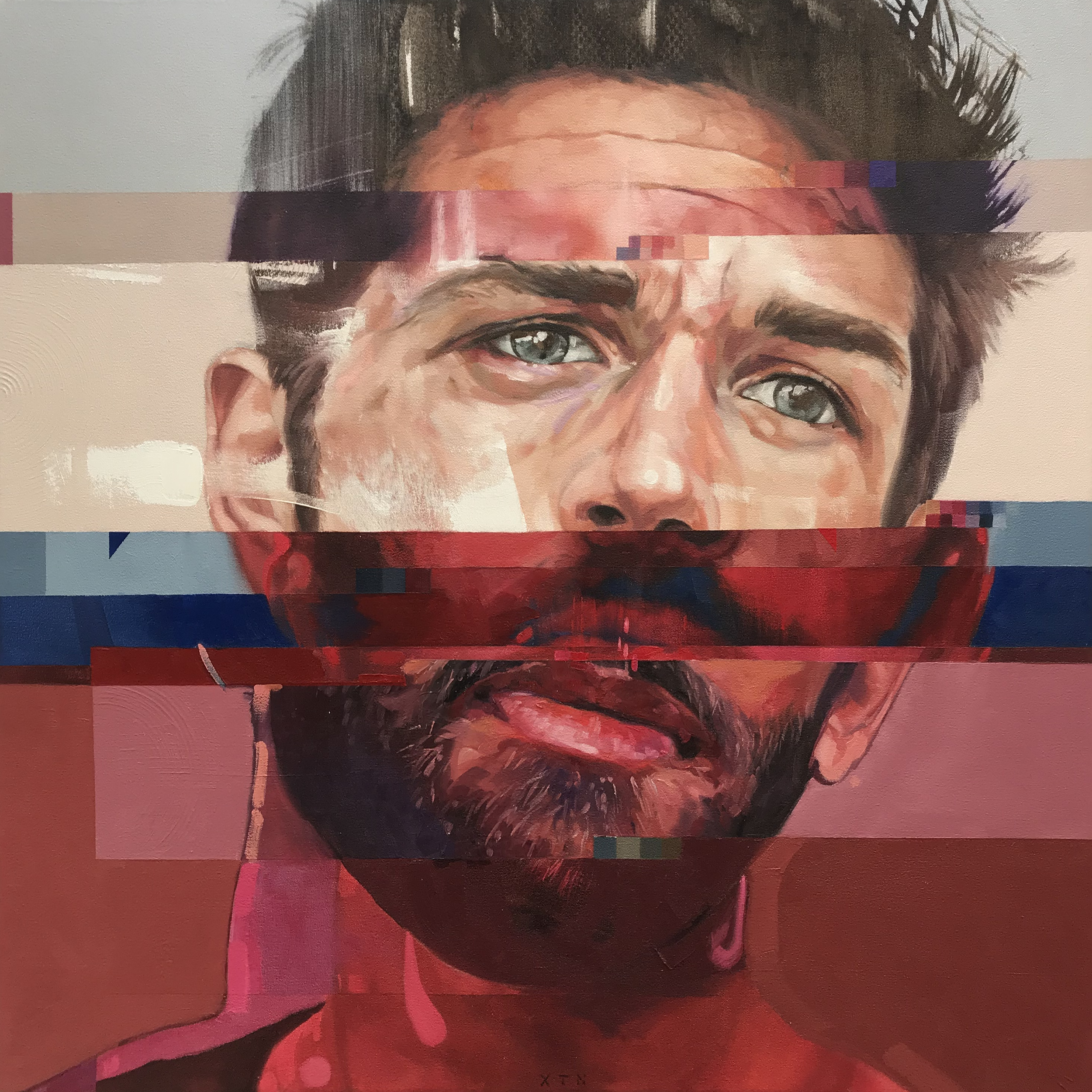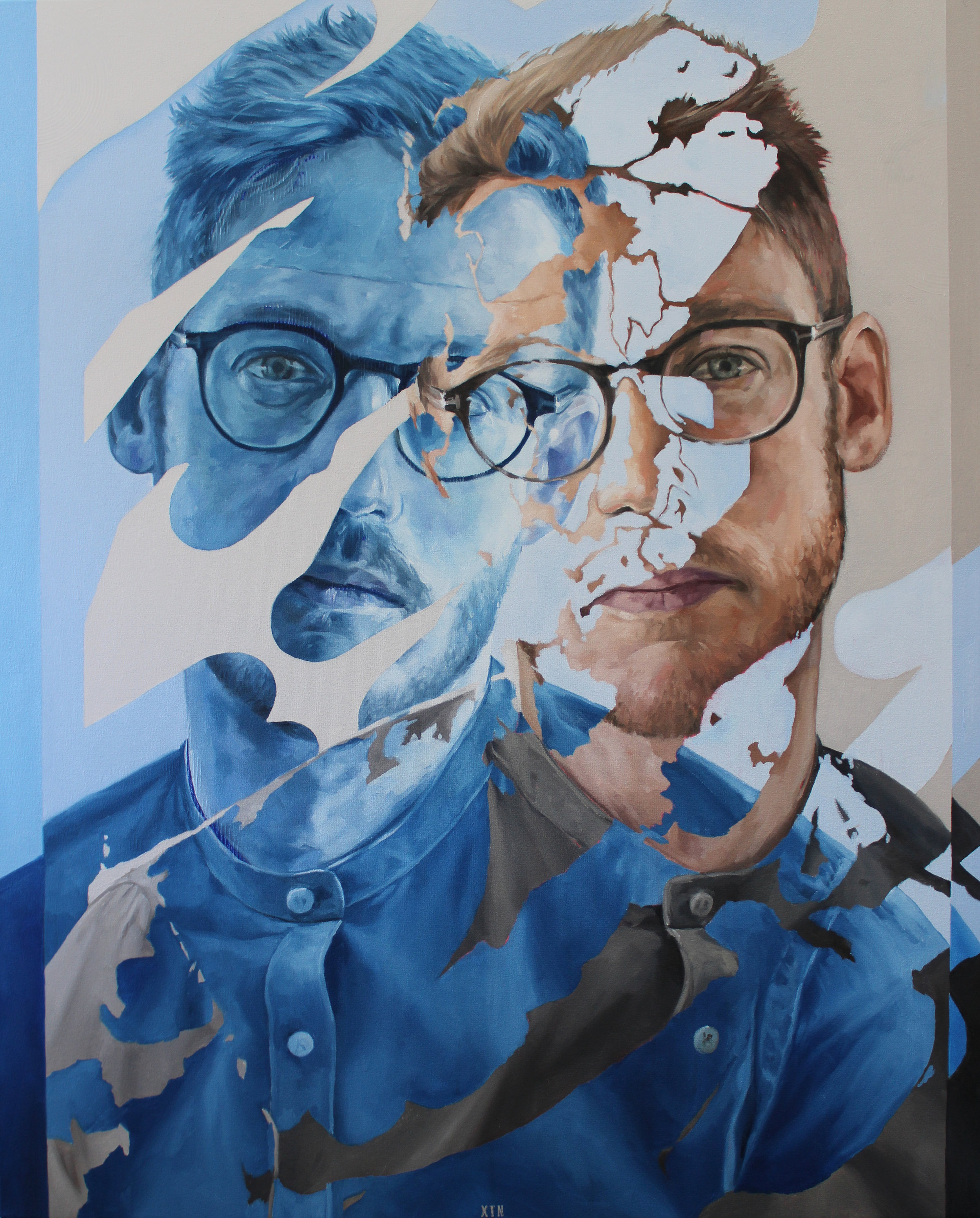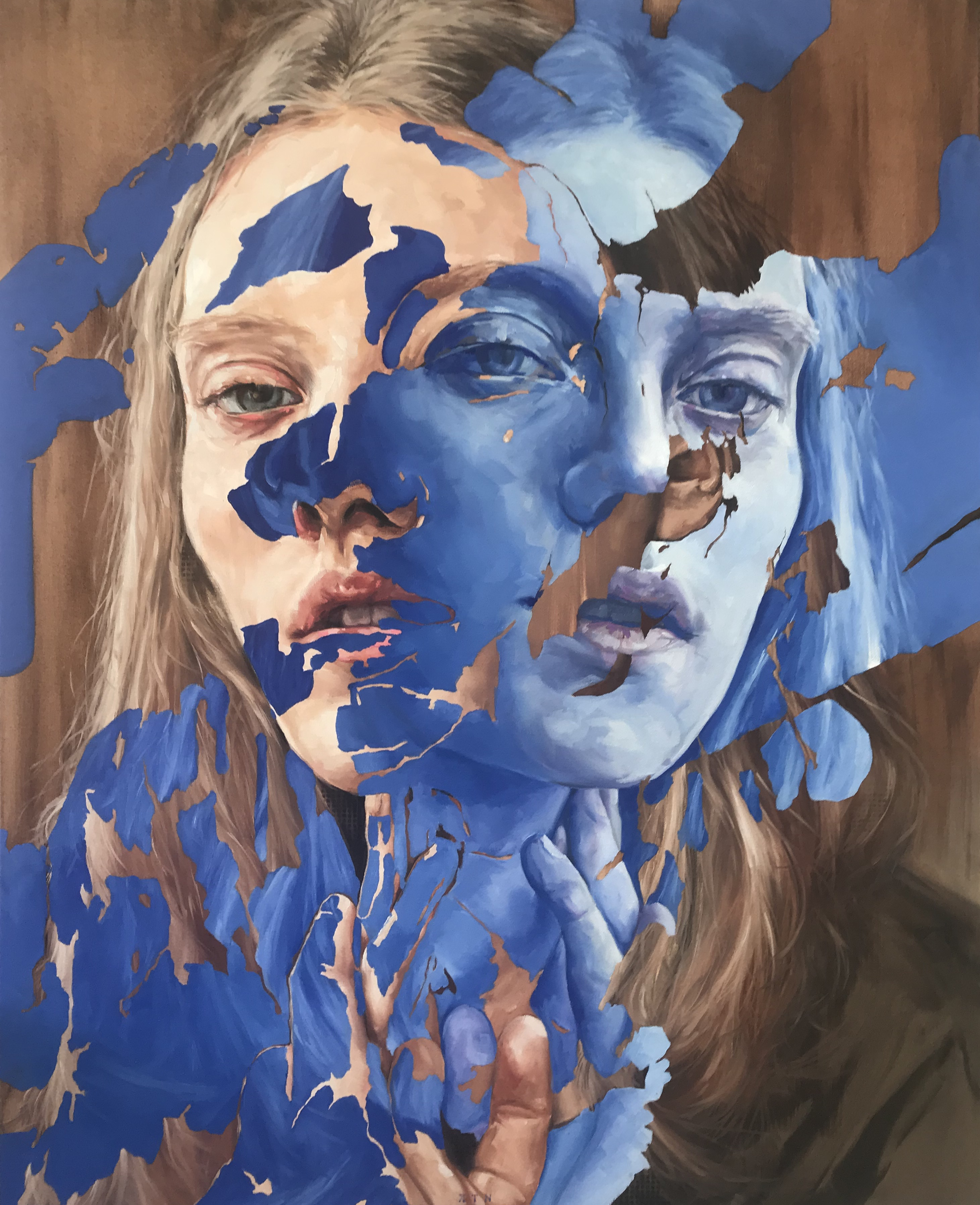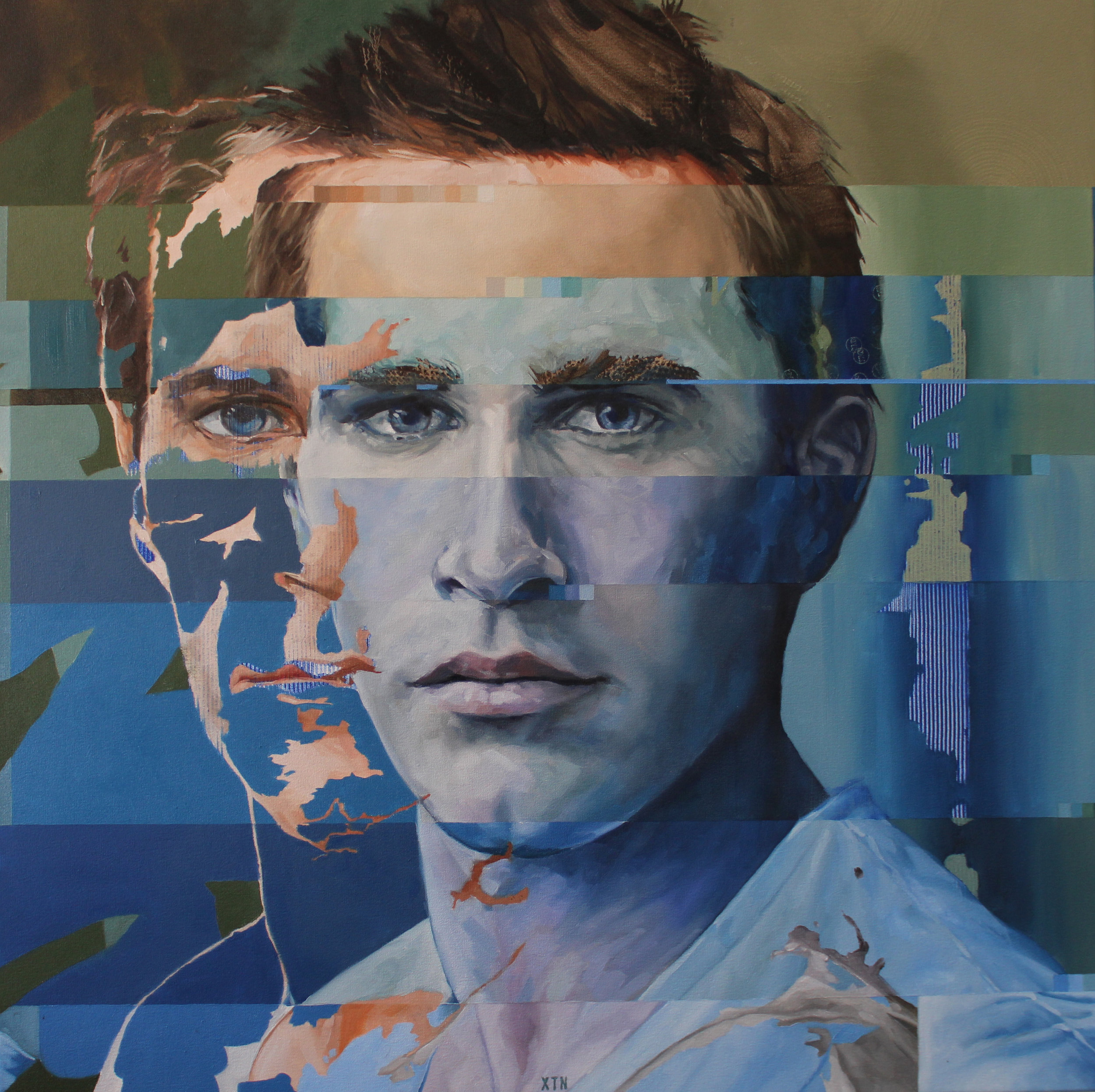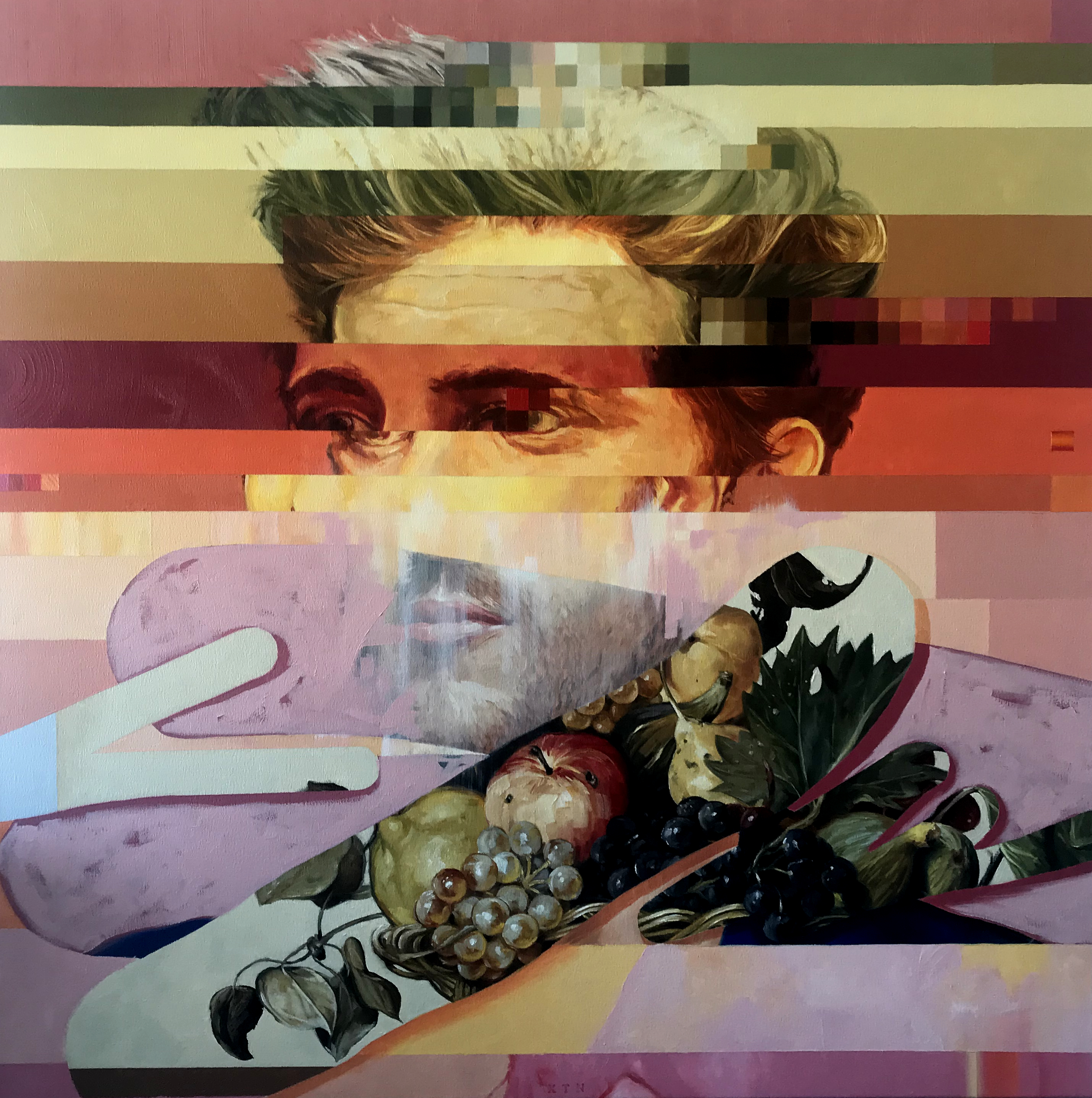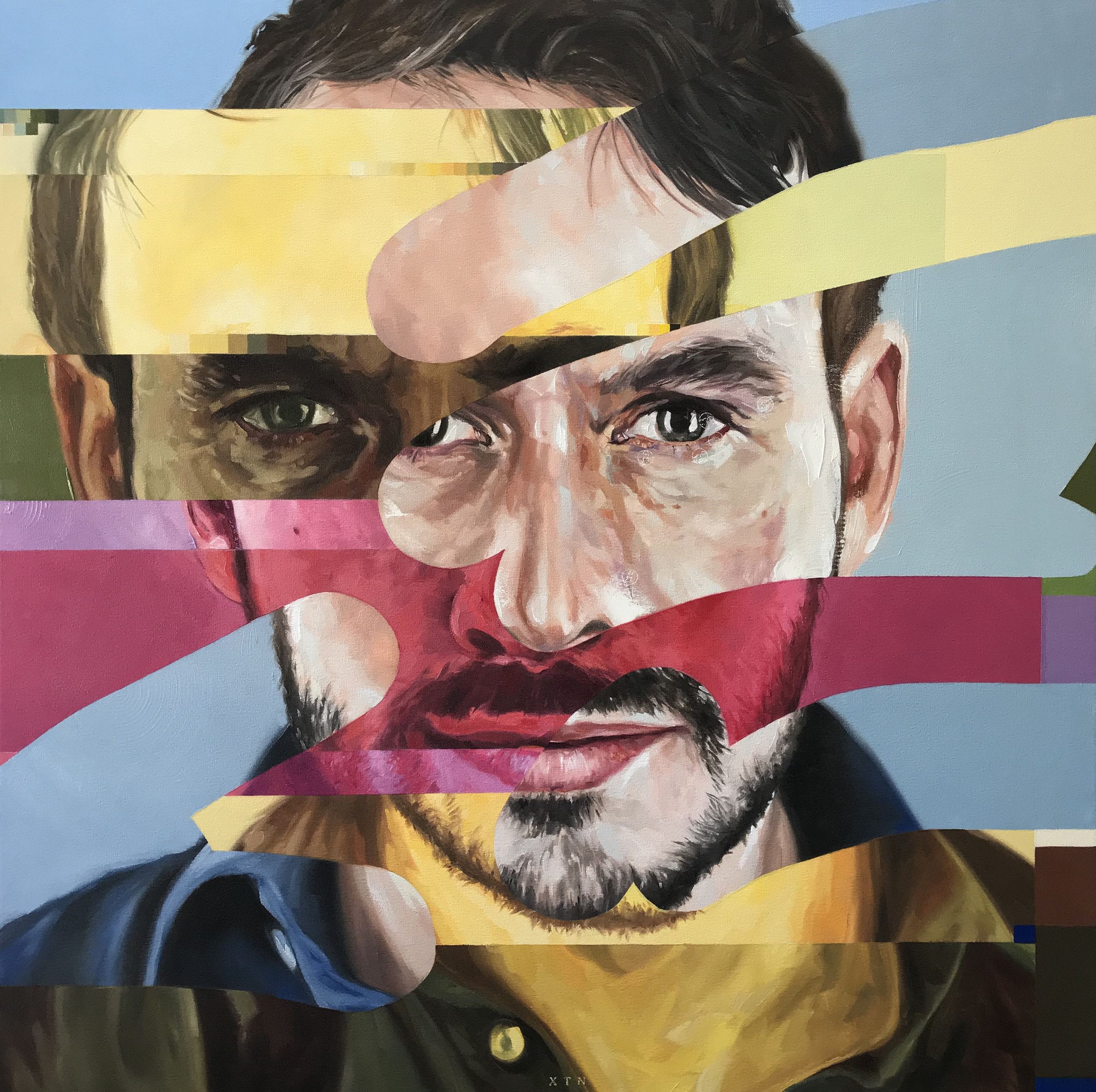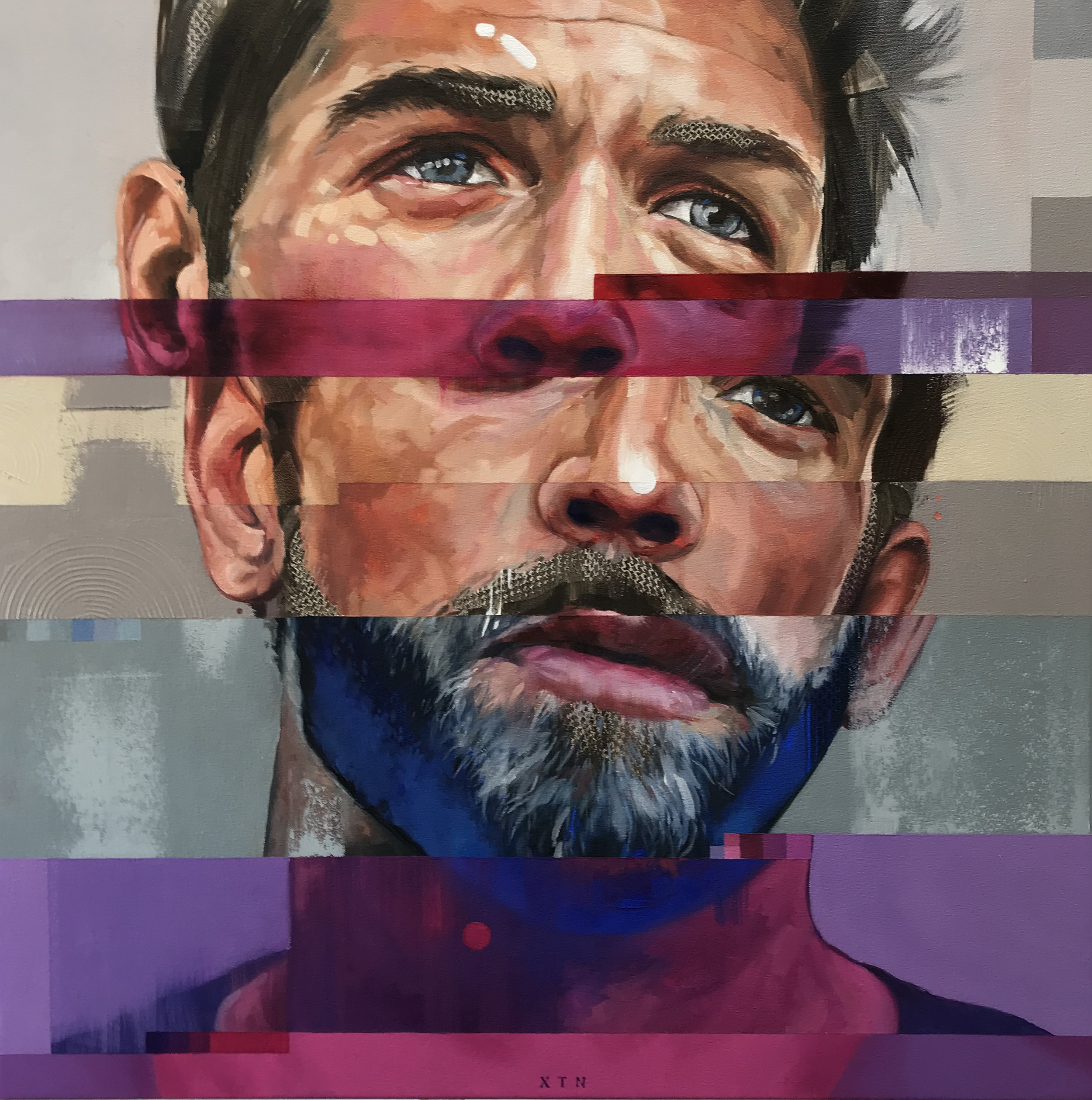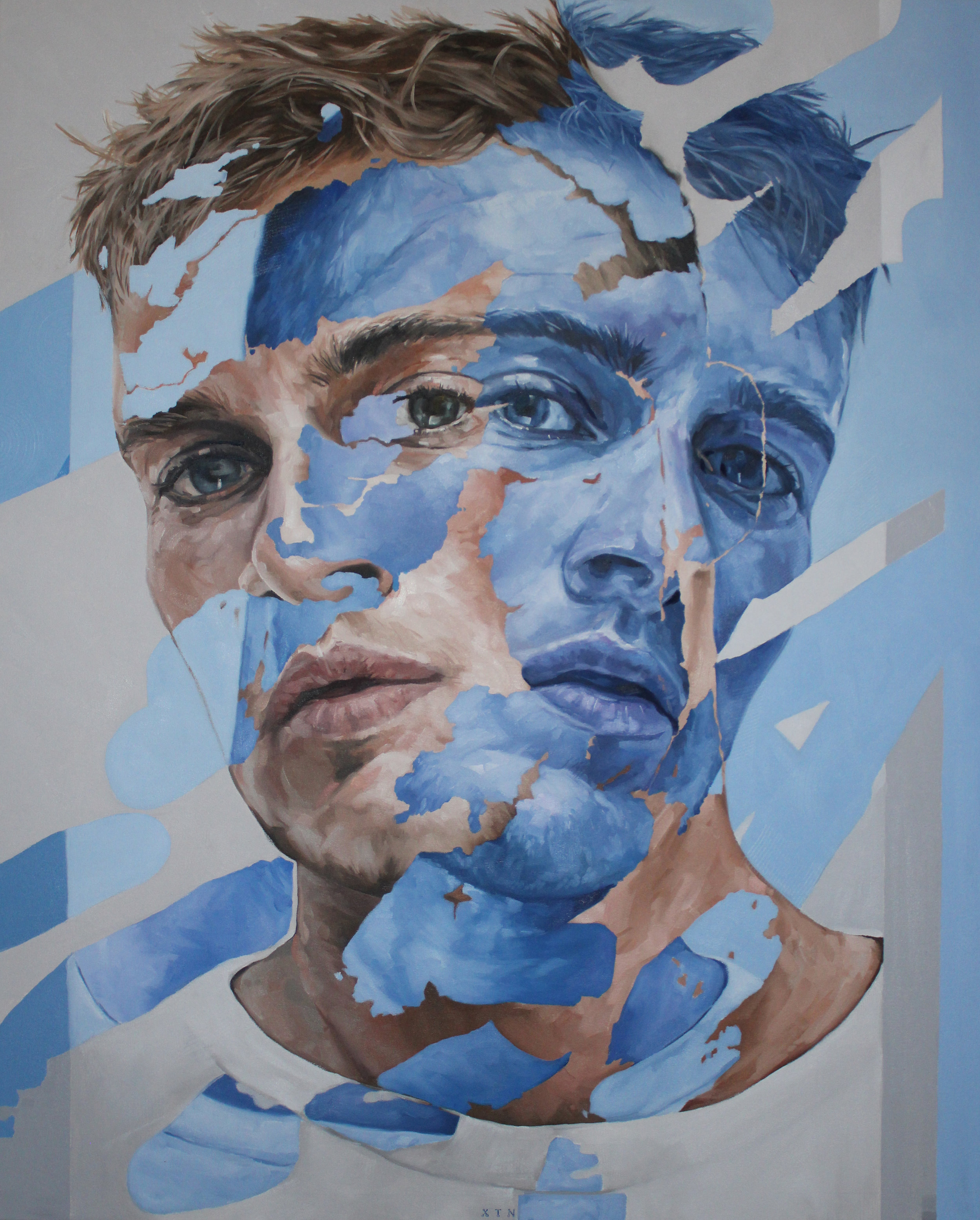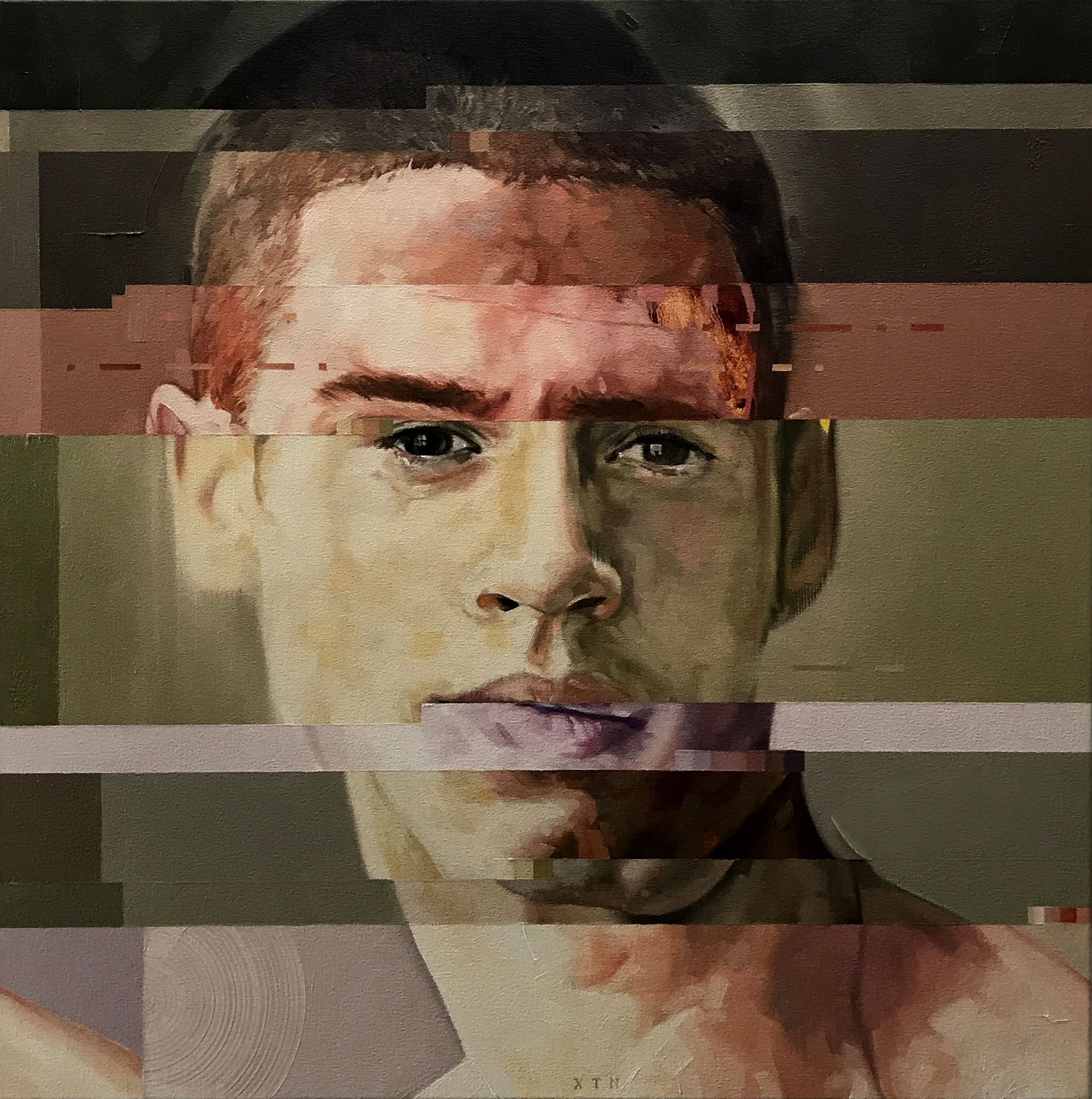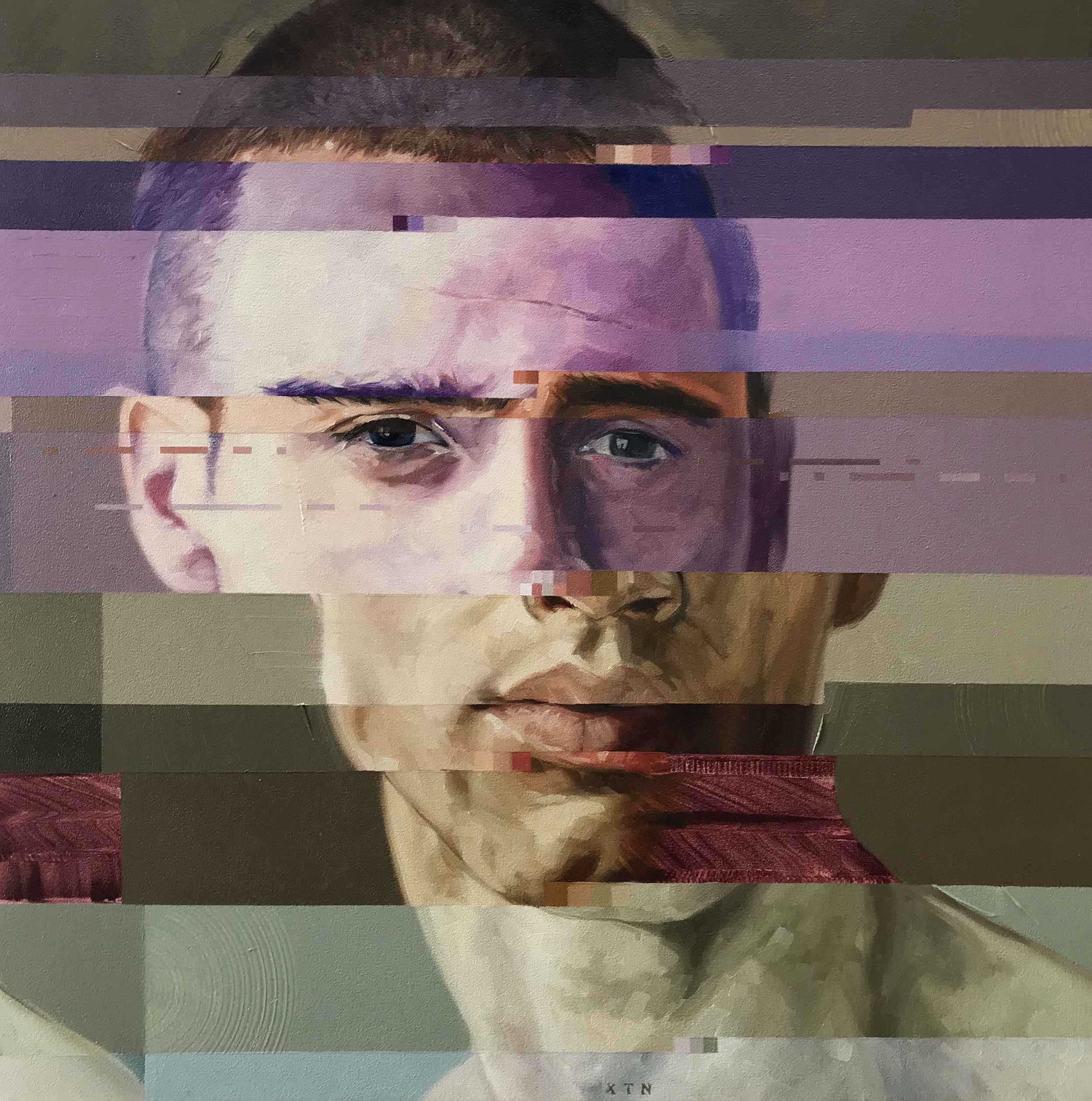Corné Eksteen Art
Corné Eksteen in his own words: “ In recent years technology and its impact on our visual lives has played a major role in my work. Literally anything that is filtered into our lives through screens/transmissions/interfaces is a great source of reference for my work. My fascination with visual communication started with music videos and music packaging, long before I discovered the power of painting. One can almost say my roots are in M-TV/Pop Shop-it’s an 80's thing.
Anything from music videos, lyrics, dialogue in movies to logos can be referenced in a single piece. What really fuels/inspires me is the creation of layers of meaning and reference in a single image. Sometimes people get it straight away and other times, I’ll get a mail a few years later, when someone has discovered something in a painting that they never spotted before. Recent work contains crop circles, Victorian carnival organ note sheets, pixels, logos etc.
There are so many ideas/layers of meaning locked into these faces. The most fundamental idea behind them is to explore identity. Each of the portraits represent an archetype - so even if the image is based on a single person, this person will represent a group of people with similar traits.
In recent years there’s been two major distinctions in my work as far as the slices/distortions are concerned. These are what I generally refer to as the Glitch paintings. The idea with these was to explore how we see ourselves through the filter of technology. These paintings were all based on effects that occur to digital images when they break down/get corrupted/glitch. They are commentary on how our perception of our identity is being influenced by digital technology.
The process of this included hours of VHS footage being crushed up, fed back into the cassettes and photographing stills from the playback of the damaged tapes. I studied corrupted image files to figure out how they degraded and then applied those ideas to the photographs of my models.
I also did a lot of research on how our brain has the ability to reconstruct these corrupted images. I became fascinated by the fact that, even when I completely distorted these images, I could still recognise my model. There is a whole aspect of neurology that fascinates me when it comes to sight and the ability of our brain to construct meaningful, recognisable images from something that is virtually abstract.”


